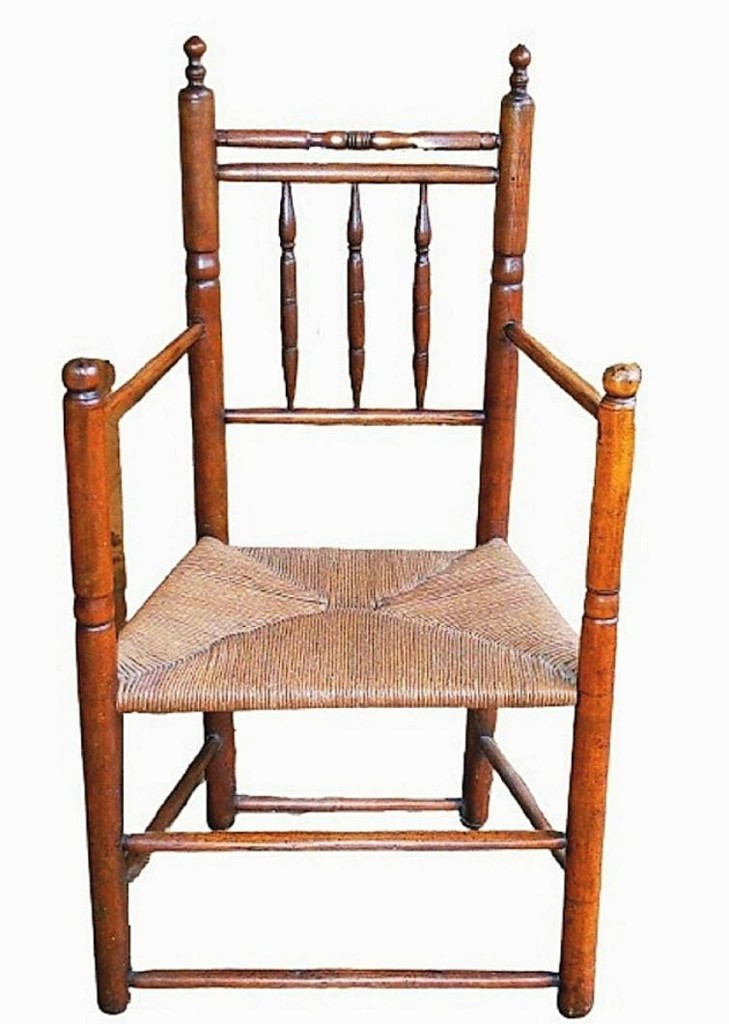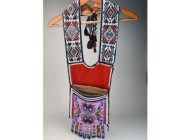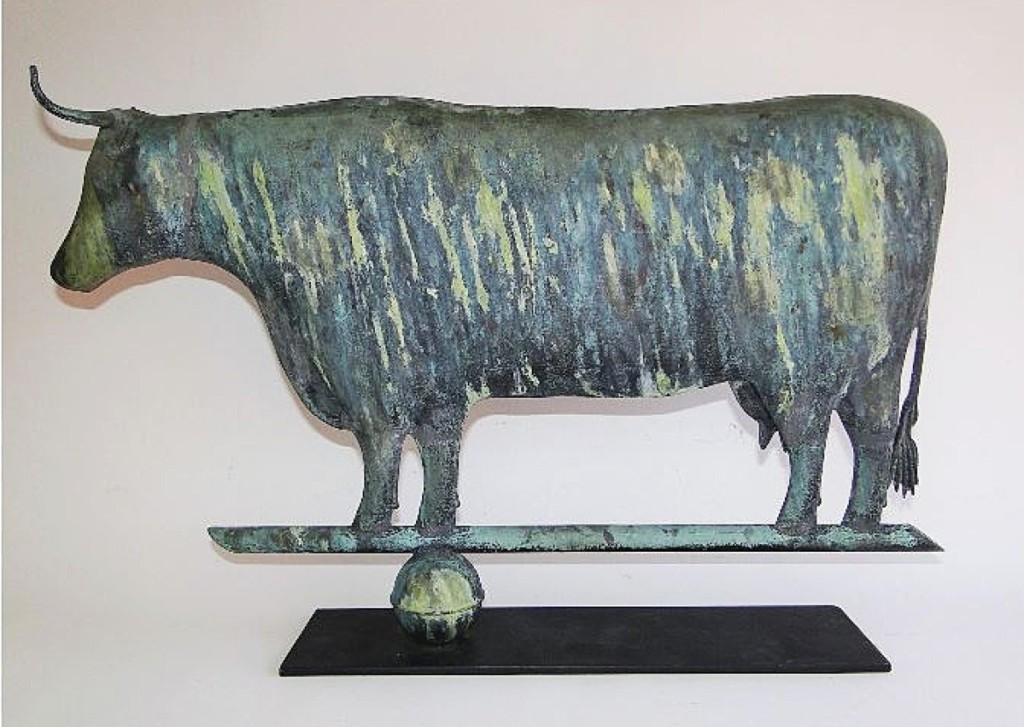
With applied zinc horns and flattened full body form, this Nineteenth Century copper cow weathervane made by Cushing and White of Waltham, Mass., featured fabulous verdigris surfaces and was in excellent condition. It was at the apex of the sale, rising to $7,500.
Review by W.A. Demers, Photos Courtesy D.L. Straight Auctioneers
STURBRIDGE, MASS. – There were more than 500 lots of choice Americana and folk art crossing the block at D.L. Straight’s premier 2021 opening sale devoted to these categories. The event entailed a bit more work for Dave Straight in that his usual venue, the Sturbridge Host Hotel, was not available due to the state’s Covid-19 restrictions. That meant putting extra pictures online, adding more descriptions and sending video “previews” to some customers to make up for the lack of an in-person preview. Ultimately, however, “It turned out to be outstanding,” said Straight. “The results were very, very good. Everybody seems to be pleased. I never would have imagined how well it worked out.” He reported that about 4,000 bidders lined up on three online platforms to participate in the sale.
A Nineteenth Century copper cow weathervane was at the apex of the sale, rising to $7,500. With applied zinc horns, flattened full body form, the weathervane made by Cushing and White of Waltham, Mass., featured fabulous verdigris surfaces and was in excellent condition, with the expected minor imperfections and old bullet hole repairs. Mounted on museum stand and measuring 25 by 15 inches, a nearly identical bull example is illustrated in Miller’s The Art of the Weathervane, page 130. The vane is staying in the Boston area, according to Straight.
There was a lengthy catalog discussion about the other lot offered in the sale that tied for the $7,500 price. It was a life-size bronze statue of an athlete by American artist Mark Beard (b 1956). Reaching a full height of 68 inches on its 11-by-21-by-30-inch base, the sculpture is signed “Bruce Sargent,” part of Beard’s running spoof of working under assumed artist aliases from history. He uses multiple names to explore different styles from art history, including Impressionism, German Expressionism and Art Nouveau sculpture. Over the course of his career, the artist has worked under the names Bruce Sargent, Hippolyte-Alexandre Michallon and Brechtholdt Streeruwitz. Beard has designed more than 20 theatrical sets for major productions in New York, London, Cologne, Vienna and Frankfurt. His works are currently held in the collections of the Museum of Modern Art in New York, the Utah Museum of Fine Art in Salt Lake City, the Museum of Fine Arts in Boston, the Albertina in Vienna and the Whitney Museum of American Art in New York, among others.
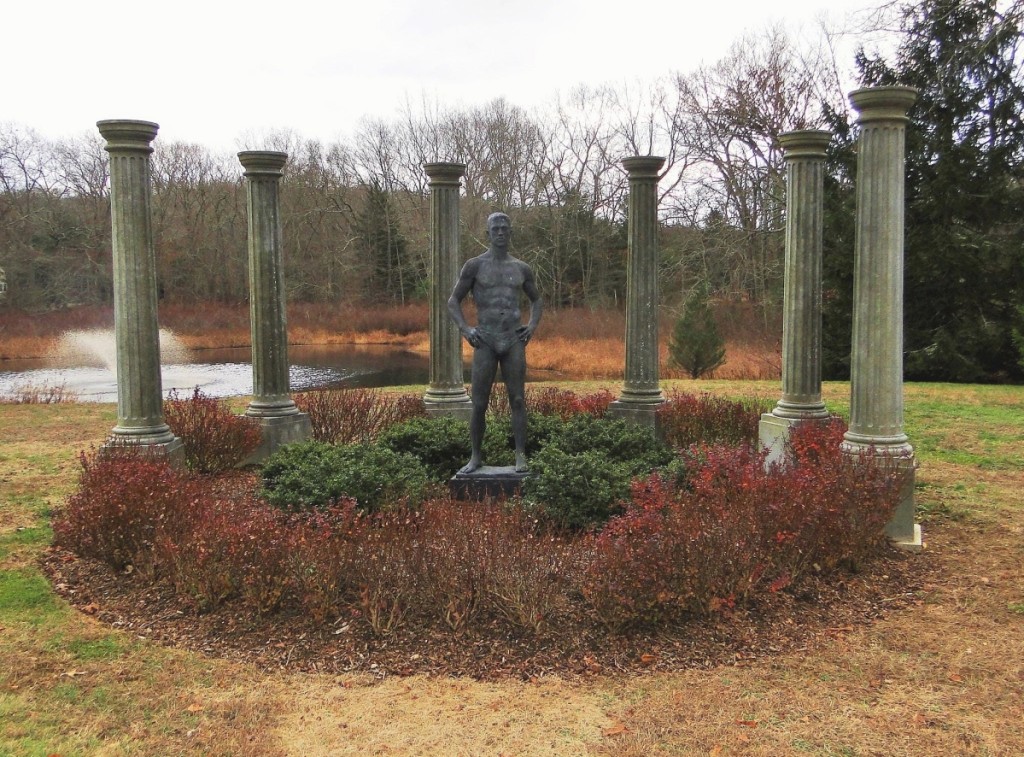
Signed by the fictional “Bruce Sergent,” a life-size bronze statue of an athlete by American artist Mark Beard (b 1956) reached a full height of 68 inches and a final price of $7,500. Beard spoofs artist aliases from history in his works, some of which are currently held in the collections of the Museum of Modern Art in New York, the Utah Museum of Fine Art in Salt Lake City, the Museum of Fine Arts in Boston and others.
Some Fun with Tiles might be an apt description of an interesting lot crossing the block – a group of more than 100 5-inch Delft tiles. Estimated $200/300, they found a serious buyer who laid out $6,250. They depicted children jumping, rope, spinning a top, doing headstands and there were animals, too.
So now let’s talk about American period furniture. In a market where most Americana sales are top heavy in decorative arts, textiles, documents and smalls, furniture made up a whopping 80 percent of the 20 highest selling lots. Straight said he was not surprised, given the range and quality of the “brown” material sourced for this sale. “People still spend money for good things,” he observed. “Particularly with the Americana, we try to focus on original paint, single coat, not scraped down. It tends to bring a premium price.”
A rare Pilgrim chair from Seventeenth Century Plymouth County made its high estimate of $5,000. In what was described as “fantastic condition, old color, the circa 1680-90 survivor was all original ash and maple, fitted with a later Nineteenth Century rush seat.
Also rare was a William and Mary Butterfly table, circa 1690-1720. Probably of Connecticut origin, of cherry with early Spanish brown painted surfaces and retaining all original elements including full feet, the 36-by-14-by-25½-inch table with 11½-inch leaves went out at $4,250.
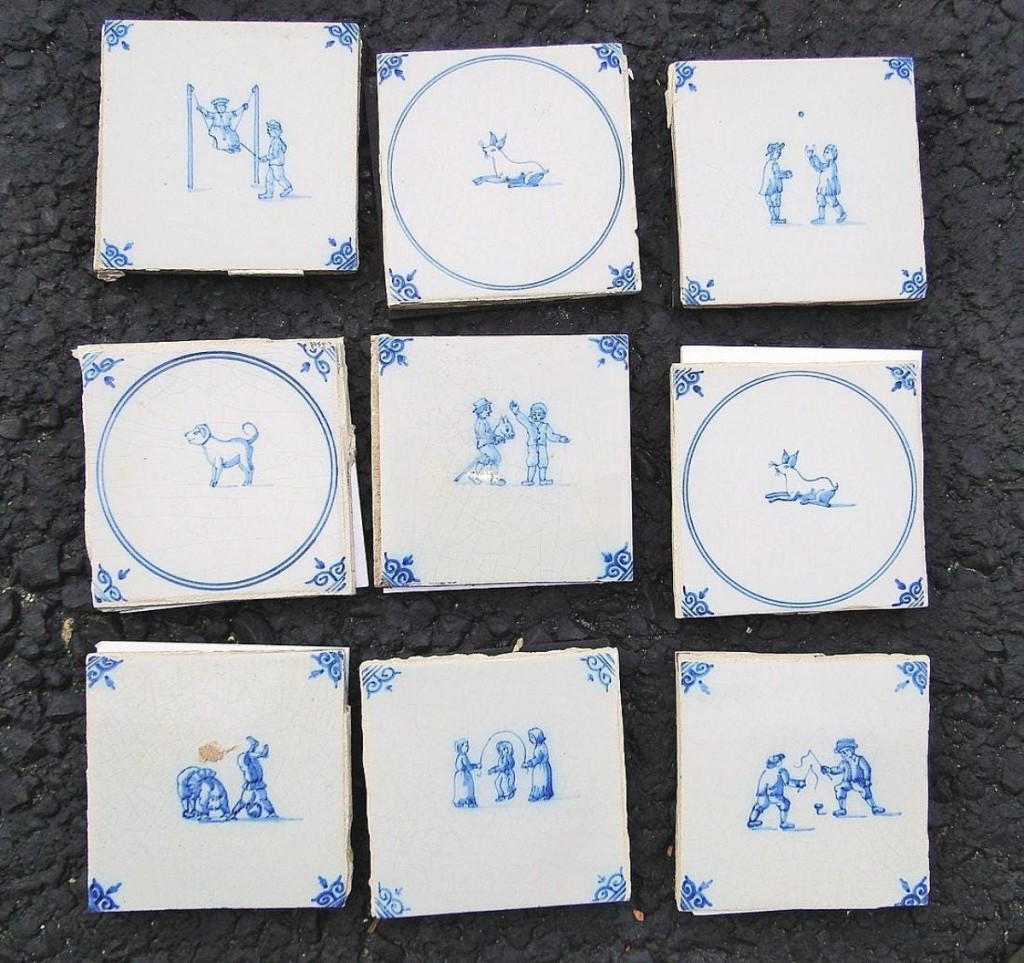
Playful themes were depicted among a lot of more than 100 5-inch Delft tiles. Estimated $200/300, they found a serious buyer who laid out $6,250.
Fetching $4,125 was an early grain painted chest of drawers, probably painted by Thomas Matteson, South Shaftsbury, Vt., circa 1820. It was a classic example of his style of painting, all original maple and pine and its dimensions were 36 by 42 by 16 inches. Vibrantly painted in a decorative manner, the chest represented the early Nineteenth Century rural Vermont “high style.” Its practitioners were inspired by the grained mahogany, satinwood, flame birch, tiger maple and bird’s-eye maple veneers that could be seen on fashionable Federal furniture. Here the artist skillfully employs paint to enliven the surface of a plain chest in an attempt to duplicate expensive urban furniture. A group of Shaftsbury chests with identical construction and the distinctive painting have become associated with Matteson.
The skeletal form of a rare Nineteenth Century child’s Queen Anne wing chair impressed bidders, rising from an $800-$1,200 estimate to $3,875. Of Newport, R.I., origin in mahogany with poplar, pine and maple secondary woods, the chair sported its original finish and, of course, displayed the fabulous form with its unique Newport side stretchers, serpentine crest, outward wings with scrolled arm and cabriole legs with pad feet.
There was a rare set of ten American birdcage Windsor chairs in old black paint, circa 1800. Solid, they went out at $3,750.
Also, a Windsor, an Eighteenth Century Pennsylvania low back armchair example brought $3,250. Ex Philip Bradley collection, it featured an old surface, full feet and porringer hand holds, measuring 30 by 27 by 17 inches.
Representing folk art in the sale was a portrait painting of girl with dog, circa 1830-50. It sold for $3,000 and was rendered in watercolor on heavy paperboard and mounted in a period carved and gilded pine frame. Catalog notes said that a female subject holding a whip in such portraits was unusual as it is typically a boy’s accessory during the period. It measured 23 by 31 inches.
Chimney cupboards are rare at auction, perhaps due to their idiosyncratic dimensions. In this sale, an Eighteenth Century example in pine, narrow with two doors, earned $2,875. It was in untouched original condition with early blue painted surfaces, original HL hinges, its upper interior with shaped and plate rack grooved shelves, and its dimensions were 78½ by 24 by 16 inches.
A tour de force of patriotic painting was offered in the form of a Nineteenth Century decorated box of an American eagle and “Temperance” rendered in full paint decoration. With lift lid, it measured 25 by 14 by 14 inches and commanded $2,750.
There was more furniture. A circa 1730-40 Queen Anne tiger maple highboy chest with pine secondary, Deerfield, Mass., nice proportions with tall cabriole legs and period brasses, brought $2,625; an early white painted tavern table took $2,500; and bringing the same amount was a rare Seventeenth Century dole or hanging food cupboard, sometimes used as a livery cupboard, used to store food supplies away from the critters. It had a carved case, solid spindle throughout and single door.
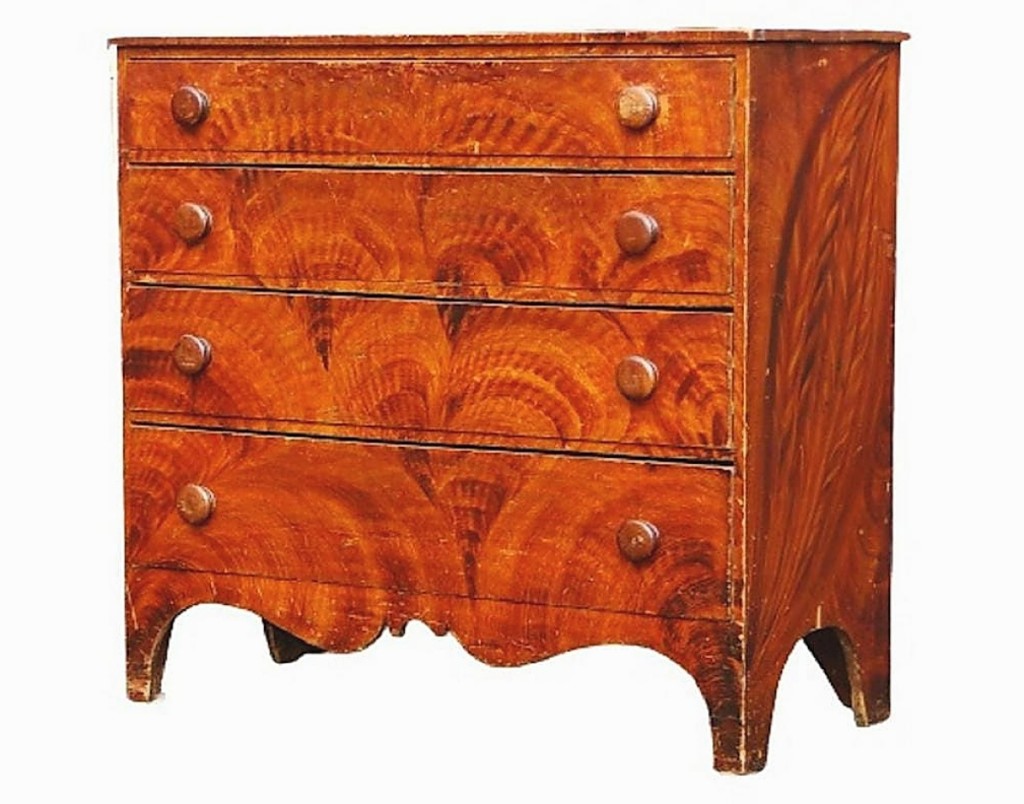
Fetching $4,125 was an early grain-painted chest of drawers, circa 1820, a classic example of the “high style” of cabinet maker Thomas Matteson of South Shaftsbury, Vt.
A dozen bids brought a circa 1690-1710 William and Mary veneered highboy, in old color, Boston, ready for use, 66 by 36 by 17½ inches, to $2,250, while a rare Pilgrim Century paneled and decorated blanket chest found a new home, also selling for $2,250.
Additional furniture highlights in the sale included an Eighteenth Century Welsh two-piece dresser from the personal collection of the late Lee Hanes of Hanes and Ruskin Antiques at $2,125; a Nineteenth Century blue painted hanging wall shelf was a surprise, making $2,000; and a circa 1740-60 painted cantback stepback pewter cupboard leaving the gallery at $1,875.
The firm has two sales coming up in March and April, dates to be announced, one from a Westchester County, N.Y., estate and another from an estate in Connecticut.
Prices given include the buyer’s premium as stated by the auction house. For information, www.dlstraightauctioneers.com or 508-769-5404.

